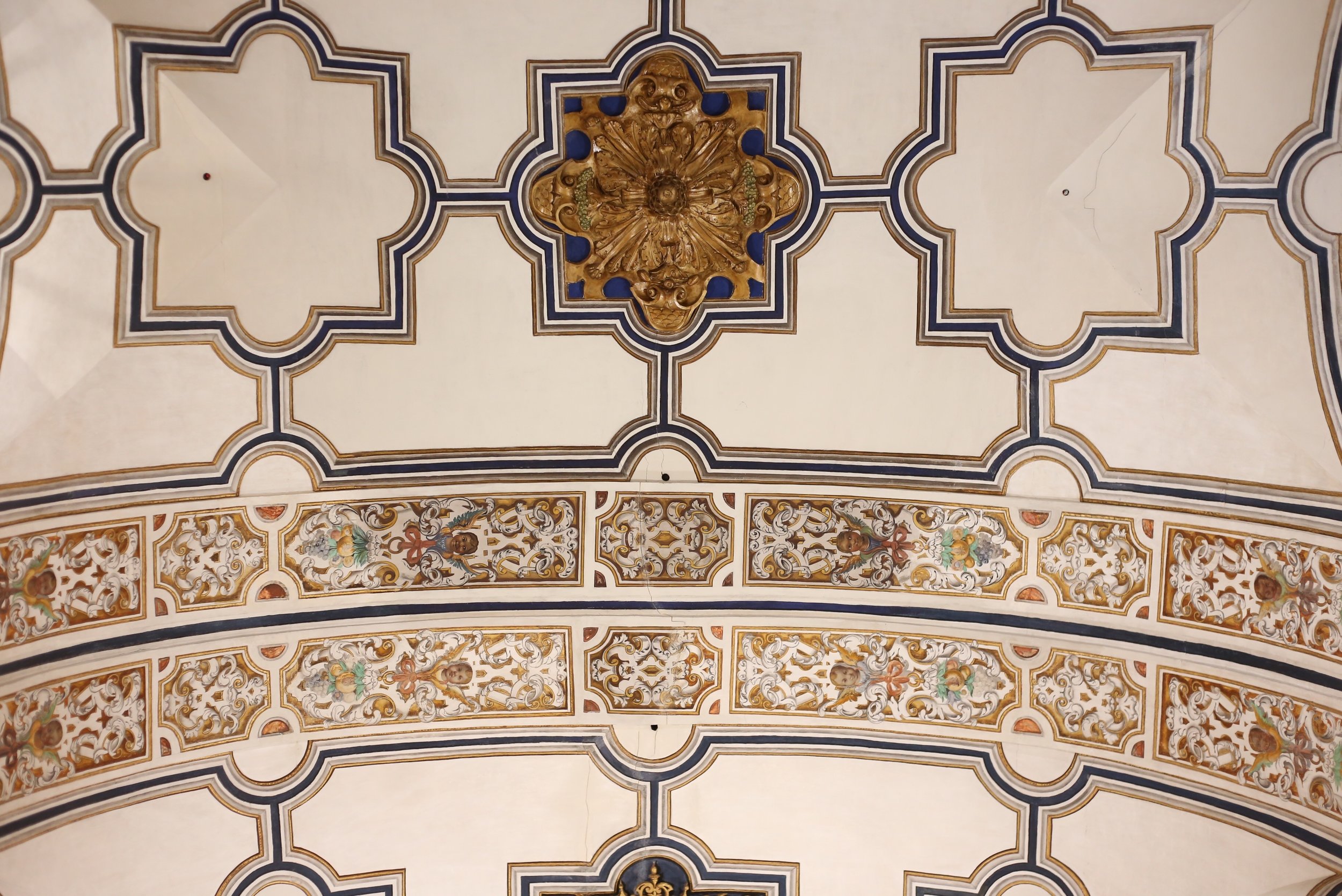“What stars do spangle heaven with such beauty.”
The study of the heavens has a long and rich historiography. While some may think of history as the inevitable march of that thing we like to call ‘progress,’ the historical study of the stars would read more like an oscillating graph. Some civilizations were closer to the scientific mark than others. The Mayans, for instance, knew much about the precise movements of the planets. On the other hand, we have the early medieval Christians, who believed the night sky was akin to a painted dome, which they called the ‘firmament,’ as described in Genesis 1:6 - 8. And thus it is that we get so many references to that ‘vault of stars’ above us, like it were the roof of a stage and not an endless expanse of space.
Belief in the firmament gradually affected the design of Gothic churches, structures that were thought to be embodiments of heaven on earth. Heaven was brought down to us in the light that pierced so many tall windows, and in the star spangled ceilings of so many Gothic cathedrals. Stars that were gilded in an azure sky of deep blue. Some of these heavenly roofs remain, one notable example surviving among the arches of Saint Chapelle in Paris.
Later, the starry ceilings gave way to the more literal depictions of heaven during the Renaissance, Baroque and Rococo periods; scenes in which angels float among clouds, the Virgin Mary shines resplendent and beckoning, and (famously in the Sistine Chapel) God reaches out to Adam from above.
✩✩✩
The church ceilings of Sevilla were different. Some were smooth, painted with trompe L’oeil flourishes meant to look like plaster moldings. Others were festooned with ribbons, all manner of flowers, and set about with small cherubs, like one of Marie Antoinette’s daydreams. Many of them featured panels showing a biblical or historical event, lost amongst the surrounding doves and gilded detail. One ceiling in particular stands out in my memory: a gold ceiling with every dome, arch and vault covered in pure white plasterwork flowers and scrolls. It is no wonder that this roof belongs to a church of the name: Santa Maria de las Nieves, or Our Lady of the Snow. They were all so beautiful. Nothing is like that moment when I walk into a church and stop… Looking up, breath taken by the majesty of the art above me.
All these ceilings looked to me like heaven.
CONVENTO DE LA MERCED
(now part of the Museum of Fine Arts)
SANTA MARÍA DE LAS NIEVES
BASILICA DE LA MACARENA
HOSPITAL DE LOS VENERABLES
CAPILLA DE SAN JOSÉ
I could not resist including this church.
The ceiling is in need of repair, but there is something so hauntingly beautiful about the black and peeling ceiling set against the ridiculously ornate golden altarpiece. It reminds me somewhat of Charles Dicken's description of Miss Havisham...
“She was dressed in rich materials — satins, and lace, and silks — all of white. Her shoes were white. And she had a long white veil dependent from her hair, and she had bridal flowers in her hair, but her hair was white. Some bright jewels sparkled on her neck and on her hands, and some other jewels lay sparkling on the table. Dresses, less splendid than the dress she wore, and half-packed trunks were scattered about. She had not quite finished dressing, for she had but one shoe on — the other was on the table near her hand — her veil was half arranged, her watch and chain were not put on, and some lace for her bosom lay with those trinkets and with her handkerchief, and gloves, and some flowers, and a prayer-book, all confusedly heaped about the looking-glass.
It was not in the first moments that I saw all these things, though I saw more of them in the first moments than might be supposed. But, I saw that everything within my view which ought to be white, had been white long ago, and had lost its luster, and was faded and yellow. I saw that the bride within the bridal dress had withered like the dress, and like the flowers, and had no brightness left but the brightness of her sunken eyes. I saw that the dress had been put upon the rounded figure of a young woman, and that the figure upon which it now hung loose, had shrunk to skin and bone. Once, I had been taken to see some ghastly wax-work at the Fair, representing I know not what impossible personage lying in state. Once, I had been taken to one of our old marsh churches to see a skeleton in the ashes of a rich dress, that had been dug out of a vault under the church pavement. Now wax-work and skeleton seemed to have dark eyes that moved and looked at me.”






























